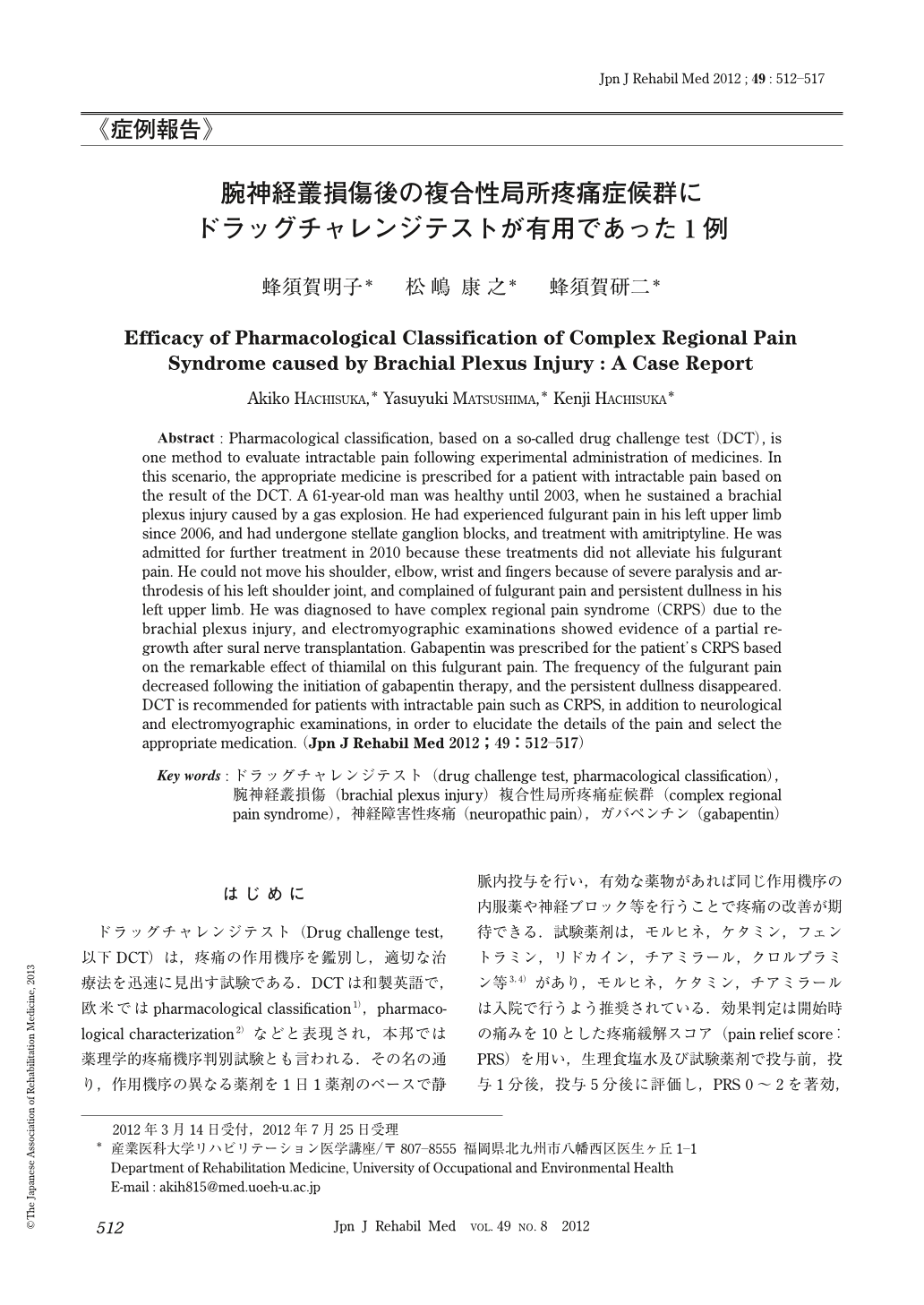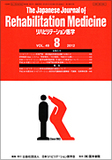Japanese
English
- 販売していません
- Abstract 文献概要
- 1ページ目 Look Inside
- 参考文献 Reference
はじめに
ドラッグチャレンジテスト(Drug challenge test,以下DCT)は,疼痛の作用機序を鑑別し,適切な治療法を迅速に見出す試験である.DCTは和製英語で,欧米ではpharmacological classification1),pharmacological characterization2)などと表現され,本邦では薬理学的疼痛機序判別試験とも言われる.その名の通り,作用機序の異なる薬剤を1日1薬剤のペースで静脈内投与を行い,有効な薬物があれば同じ作用機序の内服薬や神経ブロック等を行うことで疼痛の改善が期待できる.試験薬剤は,モルヒネ,ケタミン,フェントラミン,リドカイン,チアミラール,クロルプラミン等3,4)があり,モルヒネ,ケタミン,チアミラールは入院で行うよう推奨されている.効果判定は開始時の痛みを10とした疼痛緩解スコア(pain relief score:PRS)を用い,生理食塩水及び試験薬剤で投与前,投与1分後,投与5分後に評価し,PRS 0~2を著効,PRS 3~6を有効と判定する3,4).
複合性局所疼痛症候群(complex regional pain syndrome:CRPS)をはじめとした神経障害性疼痛は,しばしば通常の疼痛治療に抵抗性を示す.神経障害性疼痛は,リハビリテーション(以下,リハ)においても大きな阻害因子となり患者の日常生活動作(ADL)や生活の質の低下につながるため,その診断及び治療はリハ科医にとって非常に重要である.しかし,これまで麻酔科領域を中心に神経障害性疼痛に対するDCTについての報告はあるが5),リハ分野での報告や電気生理学的検査を合わせた検討は稀である6).疼痛発生機序解明のため,診察や筋電図検査と合わせてDCTを行うことで,CRPSを含めた神経障害性疼痛に対するより正確な診断や治療が可能となる.
Abstract : Pharmacological classification, based on a so-called drug challenge test (DCT), is one method to evaluate intractable pain following experimental administration of medicines. In this scenario, the appropriate medicine is prescribed for a patient with intractable pain based on the result of the DCT. A 61-year-old man was healthy until 2003, when he sustained a brachial plexus injury caused by a gas explosion. He had experienced fulgurant pain in his left upper limb since 2006, and had undergone stellate ganglion blocks, and treatment with amitriptyline. He was admitted for further treatment in 2010 because these treatments did not alleviate his fulgurant pain. He could not move his shoulder, elbow, wrist and fingers because of severe paralysis and arthrodesis of his left shoulder joint, and complained of fulgurant pain and persistent dullness in his left upper limb. He was diagnosed to have complex regional pain syndrome (CRPS) due to the brachial plexus injury, and electromyographic examinations showed evidence of a partial regrowth after sural nerve transplantation. Gabapentin was prescribed for the patient's CRPS based on the remarkable effect of thiamilal on this fulgurant pain. The frequency of the fulgurant pain decreased following the initiation of gabapentin therapy, and the persistent dullness disappeared. DCT is recommended for patients with intractable pain such as CRPS, in addition to neurological and electromyographic examinations, in order to elucidate the details of the pain and select the appropriate medication.

Copyright © 2012, The Japanese Association of Rehabilitation Medicine. All rights reserved.


